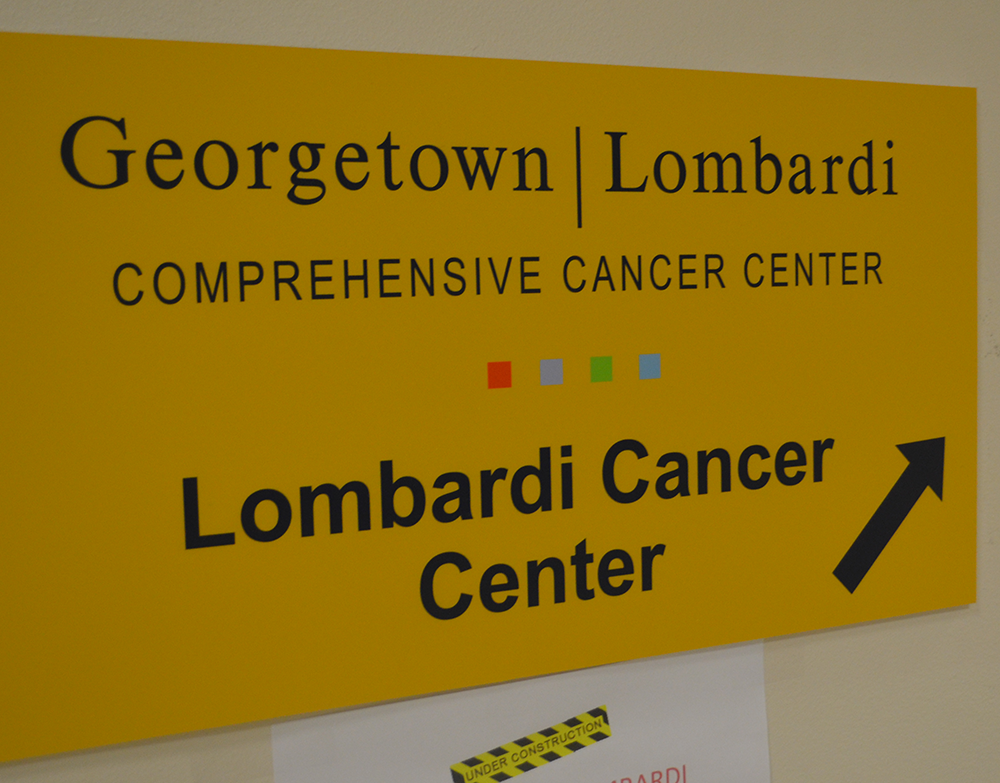
The Lombardi Center is the co-recipient on a grant from the National Institute of Environmental Health Sciences to study breast cancer factors.
The National Institute of Environmental Health Sciences of the National Institutes of Health awarded The Lombardi Comprehensive Cancer Center and the Uniformed Services University of the Health Sciences $4.5 million to study environmental factors leading to breast cancer Oct. 8.
USU associate professor Celia Byrne and Lombardi professor Marybeth Martin will lead the study, a continuation of the National Institute of Environmental Health Sciences’ 2003 Breast Cancer and Environment Research Program that seeks to identify both the causes and potential cures of the disease.
Byrne explained that research into environmental factors affecting breast cancer could prove crucial to prevention efforts. In a press release, she noted that the issue is prevalent in Washington, D.C., as it has a high occurrence of breast cancer compared to the nation.
“Our study will work to address the reasons why Washington, D.C. has one of the highest rates of breast cancer incidence in the country,” Byrne said. “This type of research is important.”
According to a 2015 American Cancer Society study examining new breast cancer cases from 2007 to 2011, D.C. had a rate of 143 per 100,000 women, compared to the national average of 123 per 100,000 women.
The five-year study will focus on the effects of the hormone estradiol, which plays a crucial role in the development of breast cancer.
Martin said that the study will attempt to determine what, if any, environmental contaminants mimic estradiol’s effects on the body and how that is possible.
“Our laboratory showed that some metals mimic the effects of estradiol,” Martin wrote in an email to The Hoya. “[That] suggest[s] that environmental exposure to these metals may increase the risk of developing breast cancer.”
With that in mind, the study will involve members of the local community who have been exposed to these metals, as well as those who are currently receiving preventative treatment at the Lombardi Center. Martin explained that the study will be conducted with these local women in mind.
“Women who come to … Georgetown Lombardi’s Comprehensive Cancer Center’s Capital Breast Care Center for screening mammography will be invited to volunteer,” Martin wrote. “[We want community members] to participate in the study.”
Martin explained that the $4.5 million will be divided between two separate experiments, each helping to determine the general results of the study.
“One project is a basic science project that will determine the mechanism by which the metals mimic hormones,” Martin wrote. “The second project will ask whether breast density is associated with the amount of metals in the body as determined by measuring metals in a toenail sample.”
Martin stressed that this study is critical in preventing the spread and occurrence of breast cancer. She said that if the study is able to fulfill its goal in determining whether or not metals have an effect on the occurrence of breast cancer, the rate of the condition in Washington, D.C., could eventually decrease.
“Breast cancer is an epidemic yet the underlying causes of the disease are largely unknown,” Martin wrote. “If we find that environmental exposure to the metals is associated with mammographic breast density, a risk factor for the disease, minimizing exposure to these metals could have a significant effect on the incidence of breast cancer.”
Martin’s is the latest of several NIH grants that researchers with Lombardi’s Breast Cancer Program have received recently, including Hassad Bassem’s grant to demystify medical data and Suzanne O’Neill’s to analyze the role of breast density in risk counseling, respectively.
In a proclamation released Sept. 30 in advance of October’s Breast Cancer Awareness Month, President Barack Obama reaffirmed his administration’s commitment to researching the disease.
“My Administration is committed to advancing research to better prevent, diagnose and treat cancer in all its forms,” Obama wrote. “Together, we must ensure all people can enjoy the extraordinary gift that is a long, happy, and healthy life.”




















